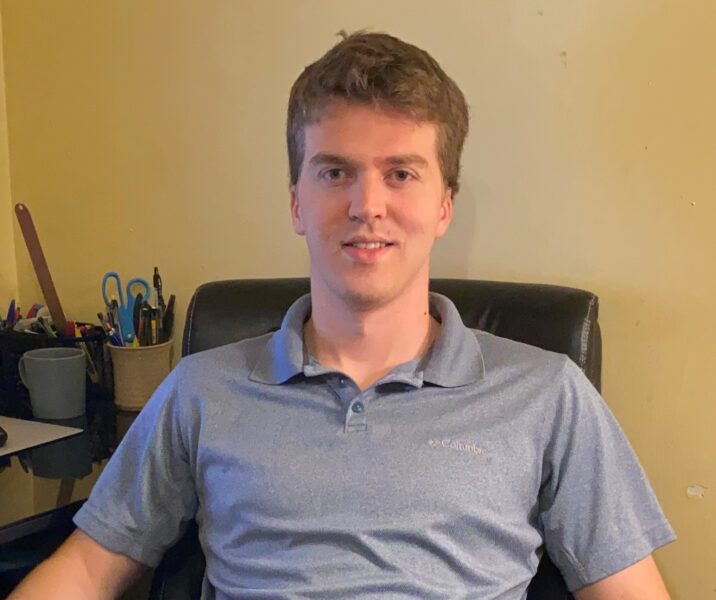CPSH Seminar Series: Eric Hiatt, Melanie Rowland, Trevor Wolf, UT Austin
April 27, 2024
April 29, 2024 at 1:00pm CT
Graduate Student Short Talks
Host: Brandon Jones
Talk One
Speaker: Eric Hiatt, Graduate Research Assistant, University of Texas Institute for Geophysics, UT Jackson School of Geosciences
Title: The Climate of Early Mars: Global Groundwater Model Based Constraints on Climatic Optimals
Abstract: The present day cold and arid climate of Mars preserves the geomorphology of a warmer and wetter past. However, the faint young sun and early atmosphere constraints produce climate models that are at odds with the clear signs of surface water processes. In this work, we use observed distributions of incised valley networks and equatorial depositional regions as geomorphic constraints on a global scale groundwater model. With this transient model, we can constrain the intensity, duration, and interval periodicity of climatic optimals capable of producing the observed geomorphology.
Biography: Eric Hiatt is a retired Army veteran from Cincinnati Ohio. He received his B.S. in geophysics at the Jackson School of Geosciences in 2019. Currently, he is a PhD candidate in planetary geophysics at the University of Texas Institute for Geophysics and the Department of Earth and Planetary Sciences within the Jackson School. He is co-advised by Dr. Sean Gulick and Dr. Marc Hesse. His interests include numerical modeling of planetary processes, hydrology, and fluid dynamics laboratory scale experiments.
Talk Two
Speaker: Melanie Rowland, Graduate Research Assistant
Department of Astronomy, The University of Texas at Austin & Fellow NASA Future Investigators in NASA Earth and Space Science and Technology
Title: Protosolar D/H abundance in the coldest brown dwarf
Abstract: Y dwarfs are the coldest class of brown dwarfs and have similar effective temperatures to temperate exoplanets, with the coldest Y dwarfs having the same masses as giant planets. We can therefore use their atmospheres as proxies for planetary atmospheres, testing our understanding of physics and chemistry for these complex, cool worlds. JWST NIRSpec observations of these objects are revolutionizing the characterization of these worlds with high SNR, moderate resolution spectra, which has been used to measure the abundances of species like water, methane, and ammonia. Here, we will show atmospheric retrieval results using public GTO data of the coldest known Y dwarf, WISE 0855 (using NIRSpec G395M spectra), which has an effective temperature of ~250 K. We will present a detection of deuterium in an atmosphere outside of the solar system via a relative measurement of deuterated methane (CH3D) and standard methane. From this, we infer the D/H ratio of a substellar object outside the solar system for the first time. We discuss our interpretation of these results and the implications for brown dwarf and giant exoplanet formation and evolution.
Biography: Melanie Rowland is a 5th year PhD Candidate in Astronomy at the University of Texas at Austin. She specializes in atmospheric characterization of brown dwarfs and directly imaged exoplanets. She uses a technique known as atmospheric retrieval to better understand planet formation, migration, and evolution.
Talk Three
Speaker: Trevor Wolf, Graduate Research Assistant, Department of Aerospace Engineering and Engineering Mechanics & Oden Institute for Computational Engineering and Sciences, The University of Texas at Austin
Title: Directly Detecting Substellar Companions Using Autoencoder Neural Networks
Abstract: Advanced post-processing algorithms are crucial to directly detect substellar companions at smaller inner working angles and deeper contrasts with high-contrast adaptive optics imaging. Fundamental to this is effectively modeling and removing speckle noise, which is often brighter and exhibits similar spatial characteristics to companion signatures. This work develops a machine learning approach for modeling and removing speckle noise. We train an autoencoder neural network with a large library of adaptive optics images taken with Keck/NIRC2 to predict speckle noise in image patches corresponding to the location of potential companion point sources. The trained network is employed in a new flexible PSF-subtraction algorithm called ConStruct, which is designed to process science target sequences, not necessarily contained in our training library. We perform a comprehensive analysis of our algorithm’s performance over 35 unique point sources in image sequences from the Keck Observatory Archive. A tuned version of our approach outperforms standard PCA post-processing for 18 out of the 22 sample sources that contain 50 or more frames, corresponding to sequences with substantial field rotation. Furthermore, ConStruct has the potential for future improvements, which may aid in maximizing the scientific yield of current and future high-contrast imaging surveys.
Biography: Trevor Wolf is a PhD candidate in the Department of Aerospace Engineering and Engineering Mechanics at UT Austin. His multi-disciplinary research interests include direct high-contrast imaging and image post-processing, space surveillance/space object tracking, and spacecraft navigation and trajectory planning.



